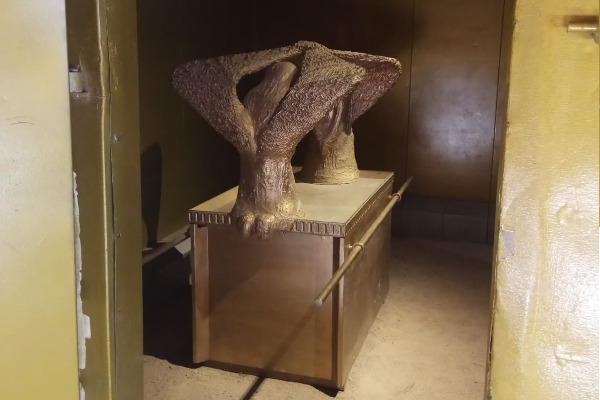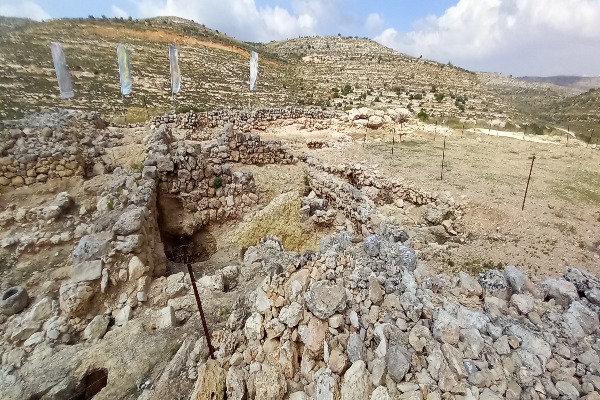Visit life-size replicas of the biblical Tabernacle next time you're in Israel
Tabernacle has been interpreted as a foreshadowing of Jesus' salvation plan for humanity

The holy Tabernacle housing the presence of the God of Israel, once carried by the ancient Israelites, no longer exists. However, since the Jews have reclaimed their ancestral homeland in Israel, they reconstructed two replicas of this legendary religious structure. It should be noted: These replicas are displayed for educational purposes and are not functional.
Despite many Jews eagerly awaiting the reconstruction of the Temple in Jerusalem, which was destroyed by the Romans under Titus in 70 A.D., the concept of a Tabernacle as a dwelling place for God's presence has become irrelevant today. Israelite religion transitioned from the Tabernacle to a permanent Temple during Solomon's reign in the 10th century B.C.
Scholars determined that King Solomon built the first temple around 967 B.C. This date has been established using a specific method, which can be further explored on the Armstrong Institute website.
The Tabernacle is a prominent theme in the Bible, mentioned frequently throughout the Hebrew Scriptures and New Testament. It represents both the physical holy shrine and the spiritual dwelling of God among humans. Bible followers are consistently intrigued by this topic when touring Israel.
Tourists can visit two Tabernacle replicas in Israel: one located at Timna Valley near Eilat and the other at Eshel Hashomron near Ariel in Samaria.
The Timna Tabernacle, first displayed in Switzerland during the 1990s before returning to Israel, now stands in the scenic Timna Valley in the southern Israeli desert near Eilat, adjacent to ancient copper mines often associated with King Solomon. Set against the desert backdrop, it offers an accurate and authentic reconstruction reminiscent of the Israelites' Tabernacle during their desert journey, matching the dimensions and features described in the Bible. Inside, visitors can explore exact replicas of various elements, including the altar, copper sink, table of showbread, menorah (the seven branches candelabrum), the small altar for incense, ark of the covenant, priestly vestments, and more.

The "Biblical Park" at the Eshel-Hashomron Hotel in Ariel, Samaria, inaugurated in 2014, showcases a life-sized replica of the Tabernacle of Shiloh from the biblical period of Judges, distinguishing it from the one at Timna. The garden features interactive stations, such as a miniature Jordan River. Owned by the only Jewish hotel in Samaria, this replica offers insight into the Tabernacle during the settled period of the Israelites under the Judges, particularly during Samuel’s time.
Tourists who are interested in delving deeper are encouraged to visit the ancient Shilo archaeological site before or after exploring the Tabernacle at Eshel-Hashomron. At Shilo, archaeologists have discovered what they believe to be the location of the Tabernacle during Samuel’s childhood.

Originally, God’s dwelling place among humans was a large tent complex known as the "Tabernacle," or "Mishkan" in Hebrew. According to Torah.org, the dimensions of the tent itself were 9 by 30 cubits (approx. 15 by 45 ft. or 4.5 by 13.8 m), as detailed in Exodus 26:15-25. According to others, the Tabernacle Courtyard Fence measured 75 ft. (23 m.) wide by 150 ft (46 m.) long.
Beyond being a physical space for God's presence during the pre-Temple biblical era, the Tabernacle has been interpreted by many Christian scholars and religious leaders as an image of salvation through Jesus' sacrifice.
Today, many Christians view the Tabernacle as an emblem of Christ's body and the Church, where the Messiah resides, and as a pathway to salvation and God's presence. Constructed of Acacia trees (twisted, and imperfect wood) – representing sinful humanity – covered primarily with copper, silver and gold to symbolize the glory of God enveloping the redeemed church.
To approach God's dwelling in the Holy of Holies, known as His presence (referred to as the "Shekinah" in Hebrew), the Israelites had to pass by the altar where the eternal burning fire was lit. Most Christians today understand this idea is for all humanity: Forgiveness and purification for humans were only possible through sacrifice, necessary for reaching God's Holy presence.

The next station on the journey is the cleansing "kiyor," or copper sink, made from Hebrew women's mirrors. Here, the priests would wash their hands, seeing their reflections in the water (like in the mirrors) – understood as a symbolic reminder of human sin being reflected to them before they are cleaned. Notably, this sink follows the altar, emphasizing that purification follows only after the sacrifice. And so it is as the scriptures show that Jesus purified humanity through his sacrifice.
The subsequent station is the holy place within the tent, where sacred items are positioned. These include the table bearing the 12 loaves of bread, symbolizing provision for the 12 tribes and in fact for all humanity.
The seven-branched menorah (or candelabrum) emits light, reflecting off the acacia panels overlaid with gold. This concept is sometimes interpreted as the Church, represented by the tent, reflecting the light of Jesus, symbolized by the menorah lamp. This interpretation ties in perfectly with the verse of Matthew 5:14-16: “You are the light of the world [...].”
The final station is the Holy of Holies, representing the presence of God and housing the Ark of the Covenant.
There is much to explore regarding these topics and the diverse Christian and Jewish interpretations of the Tabernacle as a divine model for God's plan for humanity's salvation. In the past, the High Priest – now represented by Jesus in Hebrews 4:14 – was the only one permitted to enter the Holy of Holies and to offer the blood of the annual sacrifice for the forgiveness of sins on Yom Kippur, the Day of Atonement. Similarly, according to the New Testament, Jesus was the only one to get inside the Holy presence of God for humanity's redemption.
Visiting the replicas of the Tabernacles at Timna Park and Eshel Hashomron, and even the archaeological site at Shilo, provides deeper insight into the profound and impactful message of God regarding humanity's salvation. As mentioned above, interpretation of New Testament scriptures point to the Tabernacle‘s layout as an indication of the things to come: That Jesus alone is the High Priest who provides forgiveness of sins and gives access to the presence of God.

Aaron Goel-Angot is a Belgian-Israeli archaeologist with an expertise in antiquities identification. He is an enthusiastic numismatist and a licensed tour guide. He holds a BA degree in archaeology from the Institute of Archaeology at the Hebrew University of Jerusalem. He joined the ALL ISRAEL NEWS team as an Archaeology and Tourism correspondent. Aaron is married, father of three young children and lives in Jerusalem.













